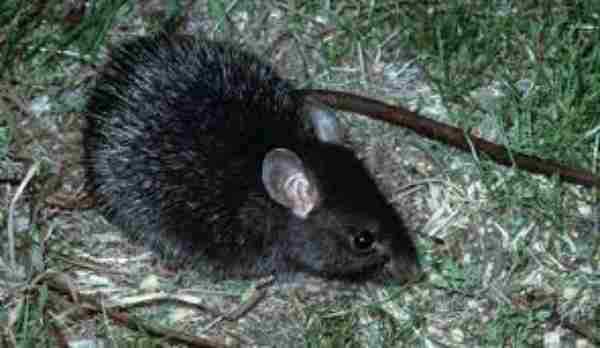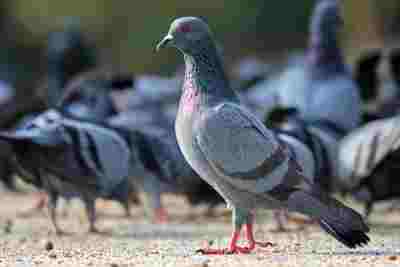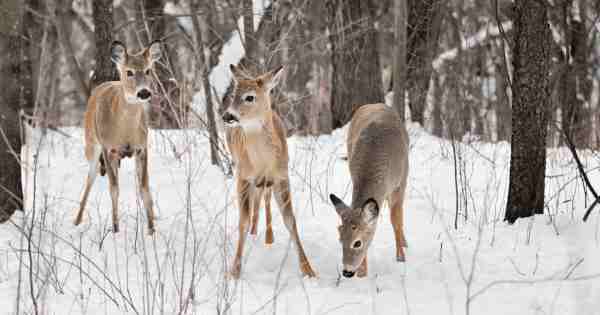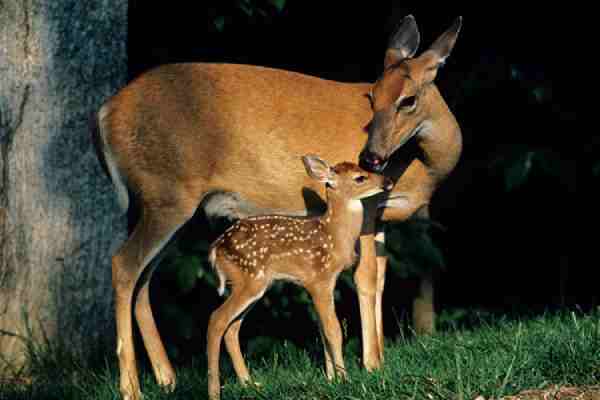Rice, a staple food for over half of the world’s population, is not only a dietary cornerstone for humans but also a tempting treat for various members of the animal kingdom. Across different continents and ecosystems, a surprising array of creatures show a distinct fondness for rice, be it cultivated or left in the wild. From birds and rodents to insects and aquatic species, these animals have found ways to include rice in their diet, demonstrating the adaptability and opportunism of wildlife.
In this article, we embark on an enlightening journey through the diverse habitats and Animals that Eat Rice. We delve into the reasons behind their culinary choices, the potential ecological impacts, and the fascinating coexistence between human cultivation and wildlife for this globally beloved grain. Join us as we uncover the unexpected culinary connections between animals and rice, showcasing the intricate interactions within the world of nature’s gastronomy.
Table of Contents
Brief Overview of Rice and its Importance as a Staple Food Worldwide:
Rice, scientifically known as Oryza sativa, is a fundamental staple food that has nourished humanity for millennia. It is a primary source of sustenance for over half of the world’s population, particularly in Asia, where it holds cultural and economic significance. As a cereal grain, rice is a rich source of carbohydrates, providing essential energy for the body.
Additionally, it offers vital nutrients such as protein, vitamins, and minerals. The versatility of rice is astounding—it can be prepared in various ways, from steamed to boiled, fried, or even ground into flour for diverse culinary applications. Its adaptability and nutritional value make rice a critical element in addressing global food security challenges, ensuring that billions have access to a reliable and substantial food source.
This ancient grain has profoundly influenced cultures, shaped agricultural practices, and remains central to countless diets, embodying a deep-rooted connection between humans and their sustenance.
1. Rats and Mice:

Rats and mice, infamous for their prolific ability to adapt and survive in various environments, including urban areas and agricultural fields, are significant consumers of rice. Their sharp teeth enable them to gnaw through packaging and storage units, gaining access to rice grains. Once inside, they voraciously consume rice, causing substantial damage to crops and stored supplies.
The economic and agricultural impact of these rodents on rice production is a pressing concern for farmers globally. Implementing effective pest control measures, proper storage facilities, and habitat management is crucial to mitigate their impact and protect rice crops.
2. Pigeons and Doves:

Pigeons and doves, common birds found in both urban and rural settings, occasionally feed on rice grains, especially if readily available. In urban areas, they may scavenge for spilled rice around markets or feeding areas. This behavior can sometimes cause conflicts with humans, particularly in regions where these birds are considered pests due to their large populations.
However, pigeons and doves also play a role in seed dispersal and can inadvertently aid in plant propagation when they consume rice and spread seeds in their droppings. Balancing coexistence and managing feeding areas can help regulate their interaction with rice and promote a more harmonious relationship between these birds and human settlements.
3. Ants:

Ants, while not prominent consumers of rice in its natural state, may infiltrate storage areas where rice is stored improperly. They are attracted to spilled grains or improperly sealed containers, where they collect and carry rice back to their nests. Ants can become a nuisance and potentially contaminate rice intended for human consumption.
Proper storage practices, including using airtight containers and ensuring a clean storage environment, are essential to deter ants and maintain the quality of stored rice.
4. Wild Boars:

Wild boars, known for their omnivorous diet, may forage for rice in agricultural fields if they share habitats with human settlements or if rice paddies are located near forests. Their strong snouts and teeth enable them to root through the ground, seeking rice grains and roots.
While they primarily feed on a variety of vegetation, insects, and small animals, they will opportunistically consume rice, especially during certain times of the year when other food sources may be scarce. Managing human-wildlife conflicts and securing agricultural areas is critical to reducing potential damage caused by wild boars to rice crops.
5. Monkeys:

Certain species of monkeys, particularly those living in close proximity to human settlements, may raid rice crops. Monkeys have a diverse diet, including fruits, leaves, and insects, and may supplement their diet with easily accessible rice grains. Human-wildlife conflict often arises in regions where monkeys damage agricultural fields, necessitating strategies for coexistence and protective measures for farmers to mitigate crop losses while ensuring the well-being of these primates.
6. Deer:

Deer, both wild and those in captivity, may consume rice if it’s available in the areas they inhabit. While not a primary part of their natural diet, deer are herbivores and opportunistic feeders, and if rice is accessible, they may consume it. In regions where rice fields are adjacent to wooded areas or grazing lands, encounters between deer and rice can occur. Proper fencing and land management strategies are crucial to minimize these interactions and protect both rice crops and the deer population.
7. Fish:

In aquaculture or fish farming systems, some types of fish may be fed rice-based diets. Rice can serve as a source of carbohydrates and energy for certain fish species, particularly omnivorous and herbivorous fish. Utilizing rice in aquaculture feeds can be a sustainable way to recycle byproducts of rice processing, contributing to the efficient use of resources in the aquaculture industry. Careful formulation and evaluation of rice-based feeds ensure they meet the nutritional needs of the fish, promoting healthy growth and sustainable aquaculture practices.
Impact on Agriculture and Human Economy:
Rice cultivation significantly impacts agriculture and the global economy. It is a major crop worldwide, with extensive agricultural areas dedicated to its growth. Countries like China, India, Indonesia, Bangladesh, and Vietnam are among the top producers, contributing substantially to the world’s rice supply. The demand for rice has both direct and indirect economic implications, influencing employment, trade, and the livelihoods of millions in the agricultural sector.
Furthermore, rice exports play a critical role in the economic development of many nations. The fluctuations in rice production, market prices, and trade agreements have ripple effects on national economies, making it an essential commodity in the global market. As a result, sustainable rice farming practices, efficient distribution networks, and adequate agricultural policies are imperative to ensure a stable and prosperous agricultural economy and, by extension, a sustainable global economy.
Human-Wildlife Conflict and Mitigation:
Rice cultivation attracts a variety of wildlife, creating a potential for human-wildlife conflict. Birds, particularly waterfowl like ducks and herons, rodents such as rats, and even larger mammals like wild boars, may be drawn to rice fields, causing damage to crops and financial losses for farmers. This leads to conflict as farmers strive to protect their livelihoods while coexisting with wildlife.
Mitigating such conflicts involves implementing preventive measures like scarecrows, nets, or deterrents to ward off birds and employing fencing or natural barriers to deter larger mammals. Additionally, creating alternative habitats or providing supplementary food sources for wildlife can divert their attention away from rice fields. Balancing the needs of both farmers and wildlife is essential, requiring effective and sustainable strategies that promote coexistence and minimize the adverse impacts of human-wildlife conflicts on agricultural productivity and conservation efforts.
Final Words:
Rice, as a staple food, holds unparalleled importance globally, not only for its nutritional value but also for its socio-economic implications. Its cultivation, trade, and consumption are deeply intertwined with the fabric of various cultures, making it an essential element of human life. However, this reliance on rice also brings about challenges, such as the delicate balance between protecting crops and addressing human-wildlife conflicts.
Navigating these challenges requires sustainable practices, innovative solutions, and a shared responsibility towards ensuring food security, conservation, and harmony between humans and wildlife. As we move forward, it is crucial to foster a holistic approach that considers both the necessity of rice for human sustenance and the intricate ecosystems in which it thrives, fostering a future where we can coexist with nature in a harmonious and balanced manner.
Reference:
- https://canalrivertrust.org.uk/enjoy-the-waterways/canal-and-river-wildlife/keeping-our-ducks-healthy/what-do-ducks-eat-6-things-you-can-feed-ducks
- https://www.omicsonline.org/open-access/rice-for-ruminants-race-for-a-science-under-shadow-2375-4338.1000134.php?aid=39051
- https://feederwatch.org/learn/feeding-birds-faqs/if-birds-eat-uncooked-rice-can-it-swell-up-in-their-throats-and-stomachs-and-kill-them/

Rahul M Suresh
Visiting the Zoo can be an exciting and educational experience for all involved. As a guide, I have the privilege of helping students and visitors alike to appreciate these animals in their natural habitat as well as introducing them to the various aspects of zoo life. I provide detailed information about the individual animals and their habitats, giving visitors an opportunity to understand each one more fully and appreciate them in a more intimate way.









